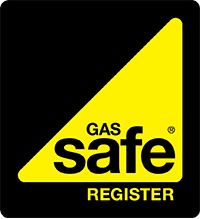How to Light a Log Burner Safely
The recent cold weather has no doubt seen more of us reluctantly turn to our gas and electric supplies to help heat our homes. However, many of us are benefitting from the warmth generated by our wood-burning fireplaces and stoves. It is a great way to warm a room and a fantastic visual addition to the home, so it is no surprise that people are, excuse the pun, warming, to using them again.
The thing is, if they haven’t been used in a while, you may want to check a few things before lighting the logs and warming up by wood.
Below, we have a few key tips for how to light your log burner correctly when in regular use and when used for the first time.
Have your chimney swept before using a log burner for the first time
Before you even consider using your log burner, whether it be for the first-ever time or for the first time in a while, you should investigate getting your chimney swept. A blocked chimney is a huge health and safety risk and one that requires immediate attention. The risk of a dangerous fire or inhalation of fumes can be significant when a chimney is not sufficiently cleared. So before lighting those logs, book in with a trusted local supplier. Our team at Ignition can help have the process carried out either via our expert Surrey based chimney cleaning team or by a selected and approved third party.
What do you need for a log burner to burn properly?
This may sound fairly straightforward, but many people have trouble lighting a wood burner due to throwing a bundle of wood in and hoping for the best. If you prepare with the correct items, you can benefit from the warmth generated much quicker. Collect the following and you’ll be reaping the rewards your log burner brings:
- Kindling is really important, these small pieces of wood that get the fire going need to be small, dry and cut into short lengths.
- Firewood sounds very obvious but you’ll be surprised how many people think any wood will do. Find dry firewood, containing a moisture level of less than 20%.
- Matches will always help get the fire started but err on the side of caution and get some that are long. This will help you avoid any burn risks.
- Firelighters can come in a variety of forms and many people may stick with paper or naturally made products. The choice is yours but we would recommend those made from wood by-products.
Firewood tips
The firewood you use is really important to not only the quality of fire but the safety element of having a fire in your home. A trusted supplier will only sell wood that contains no hidden dangers that could put you or your household at risk. New law around the sales of wet wood is aimed at preventing additional emissions so you should aim for wood that has moisture levels of less than 20%, wet wood can damage both your log burner and chimney over time. Hardwood burns for longer and gives more heat, whereas softwood, although cheaper and easier to light, can build up more tar deposits in your chimney and burn through much faster. This results in more expense both in maintenance and fuel supplies!
Lighting your log burner safely
Now that you have a cleared chimney and the correct fuel types, you are almost ready to benefit from the qualities your wood burner gives you. Just follow the following steps and you’ll be good to go!
Commonly there are two methods people go with, the traditional and the upside-down. Traditional is the one you may remember from the days as a boy scout or when out camping, a pyramid of wood put over a source of firelighter. Nowadays though, it is seen to be much more beneficial to use the upside-down technique.
- Clear your fire bed of debris ad check to make sure there is not an excessive amount of ash that could hinder the circulation of oxygen.
- Get two pieces of firewood, small in size and lay them across the fire bed.
- On top of the firewood, rest some of your kindling, it can be placed at right angles to create a grid of the kindling. Aim to use up to eight pieces but probably no less than five.
- With the firelighters you have chosen, fit them into your kindling.
- Open the air control on your wood burner to its fullest. This will allow the maximum amount of oxygen in and help the fire get started.
- Light your firelighters and close the door, just not all the way! Leave them open, just a tiny amount as the fire starts up.
- The kindling will start to alight, and the fire will take hold. Once burning well, close the doors fully
- Adjust the oxygen control and reduce as the fire gets hotter. With this step, always consult the operating manual as some products may work differently from others.
- Keep an eye on the fire and see how it is burning, a common thought is to put many logs in to keep it burning, instead, top up little and often. Many log burners will operate perfectly with just two logs inside, but this will vary on the size of the unit.
- When adding more logs, consider opening the oxygen control again as the new logs start to burn.
Can you leave a wood-burning stove on overnight?
Whilst you could leave it burning overnight, it is much safer to be careful and ensure that your wood-burning fire is put out before you retreat for the night. Leaving it burning for longer than necessary is not only worse for the environment but also adds to the potential for blockages in the flue, a dirtier chimney than necessary and a badly stained wood burner. Therefore, to save yourself the extra workload, the environment, and cash, put it out!
How do I put out a wood burner?
Lighting the fire correctly may have had several steps but putting it out can be relatively straightforward. Simply ensure the doors to the stove are fully closed. Fully close the vents, and once there are just embers, open the doors and use a poker or suitable long-handled instrument (not the musical type!) to spread the remaining embers out.
Handy tips for your ash
With the embers spread out, and the heat dissipated, you can now use the ash for a few beneficial needs at home. If the weather is cold, sprinkle on surfaces to prevent slip hazards. You can also add it to a compost heap or spread it onto your soil. Wood burners aren’t just good for keeping you warm!
If you are considering a new wood fire or a wood-burning stove then speak to us at Ignition. Based in Cranleigh but serving most of the Southeast of England, we have supplied homeowners with an incredible range of products since our inception over 40 years ago. We always welcome people to come and discover more about what we offer and are more than happy to pass on our knowledge and expertise. Visit us at our Ignition Fires Cranleigh showroom to see just part of our huge range from some of the worlds leading stove brands




